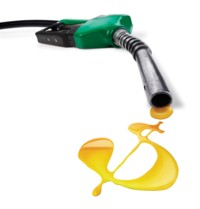Getting the Prices Right - Cutting Subsidies Could Save Billions
 Global fossil fuel consumption subsidies in 2008 were much
Global fossil fuel consumption subsidies in 2008 were muchhigher than previously estimated and totalled USD557 billion,
according to IEA analysis
The IEA has
undertaken an extensive survey to identify countries that offer
subsidies that reduce prices of fossil fuels below levels that
would prevail in an undistorted market, thus leading to higher
levels of consumption than would occur in their absence.
The survey identified 37 countries and it is estimated that
these represent over 95% of global subsidized fossil‐fuel
consumption, with the remaining subsidized consumption occurring in
countries for which reliable energy consumption and price data is
not available.
The IEA analysis has revealed that fossil fuel consumption
subsidies amounted to $557 bn in 2008. This represents a big
increase from $342 bn in 2007. Fluctuations in world prices,
domestic pricing policy changes, and shifts in demand can all be
responsible for year‐to‐year differences in subsidy estimates.
Since 2008, a number of countries
- including China, Russia, India and Indonesia - have made notable
reforms to bring their domestic energy prices in line with world
prices. These efforts are expected to contribute to a reduction in
the cost of energy subsidies to these countries in
2009.
The country with the highest subsidies in 2008 was Iran at
$101 billion, or around a third of the country’s annual central
budget. Chronic under‐pricing of domestic energy in Iran has
resulted in enormous subsidies and a major burden on the economy
that is forcing reliance on imports of refined products. Iran’s
leadership came to agreement in 2010 on a sweeping plan for energy
subsidy reform; however, steep economic, political and social
hurdles will need to be overcome if Iran is to realize lasting
reform.

The IEA analysis highlights that the price signal from subsidy
phase‐out would provide an incentive to use energy more
efficiently, and trigger switching from fossil fuels to other fuels
that emit less GHGs.
Compared with a baseline in which subsidy rates remain
unchanged, IEA modelling indicates that phase out between 2011 and
2020 would:
- Cut primary global energy demand by 5.8% by 2020. This is
equivalent to the current energy consumption of Japan, Korea,
Australia and New Zealand combined. - Cut global oil demand by 6.5 mb/d in 2020, predominately in
transport sector. This is around one third of current US oil
demand. - Reduce CO2 emissions by 6.9% by 2020 - or 2.4 GT of CO2. This
is equivalent to the current emissions of France, Germany, Italy,
Spain, and the UK combined.
Implementing the Copenhagen Accord and the phasing out subsidies
are complementary steps towards achieving the 450 Scenario,
although the savings are not strictly cumulative:
The Copenhagen Accord pledges - if fully implemented - would reduce
emissions by around 70% of what is needed to be on track to meet
the 2OC target by 2020
The G20 subsidy commitment - if
fully implemented - would reduce emissions by more than 30% of what
is needed to be on track to meet the 2OC target by
2020Policies to phase‐out subsidies for
kerosene, LPG and electricity must be carefully designed not to
restrict access to essential energy services as these fuels often
support the basic needs of the poor and can be
more easily targeted than subsidies on other energy forms.
IEA analysis indicates that today 1.5 billion people around the
world are still denied access to electricity and around 2.5 billion
people rely on traditional biomass as their primary source of
energy.
However, subsidies to kerosene, LPG and electricity in countries
with low levels of modern energy access (ie. electrification rates
under 95% or modern fuels access under 85%), represented just 11%
of the $557 bn of consumption subsidies in 2008.
Furthermore, studies have shown that most existing subsidy
programs for these fuels could be made more cost‐effective through
better targeting.
The World Energy Outlook 2010 - to be published on 9 November -
will include a special focus on energy subsides, building on the
findings outlined above. This analysis also forms part of a Joint
Report prepared by the IEA, OECD, World Bank and OPEC that will be
considered at the G20 Leaders’ Summit in in Ontario from June
25‐27, 2010.
To read the key findings of the IEA energy subsidies analysis
target=”_blank”>click here.
To see the slide presentation of the key facts,
target=”_blank”>click here
Source: www.iea.org

